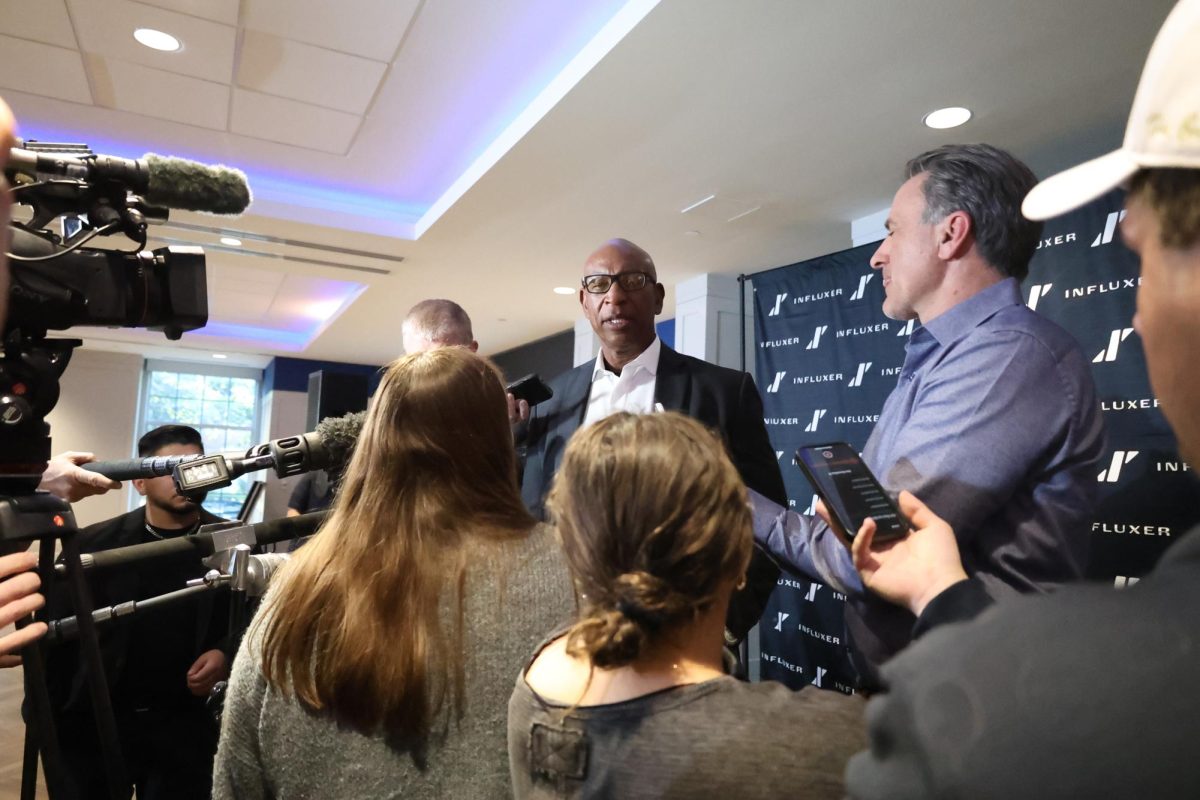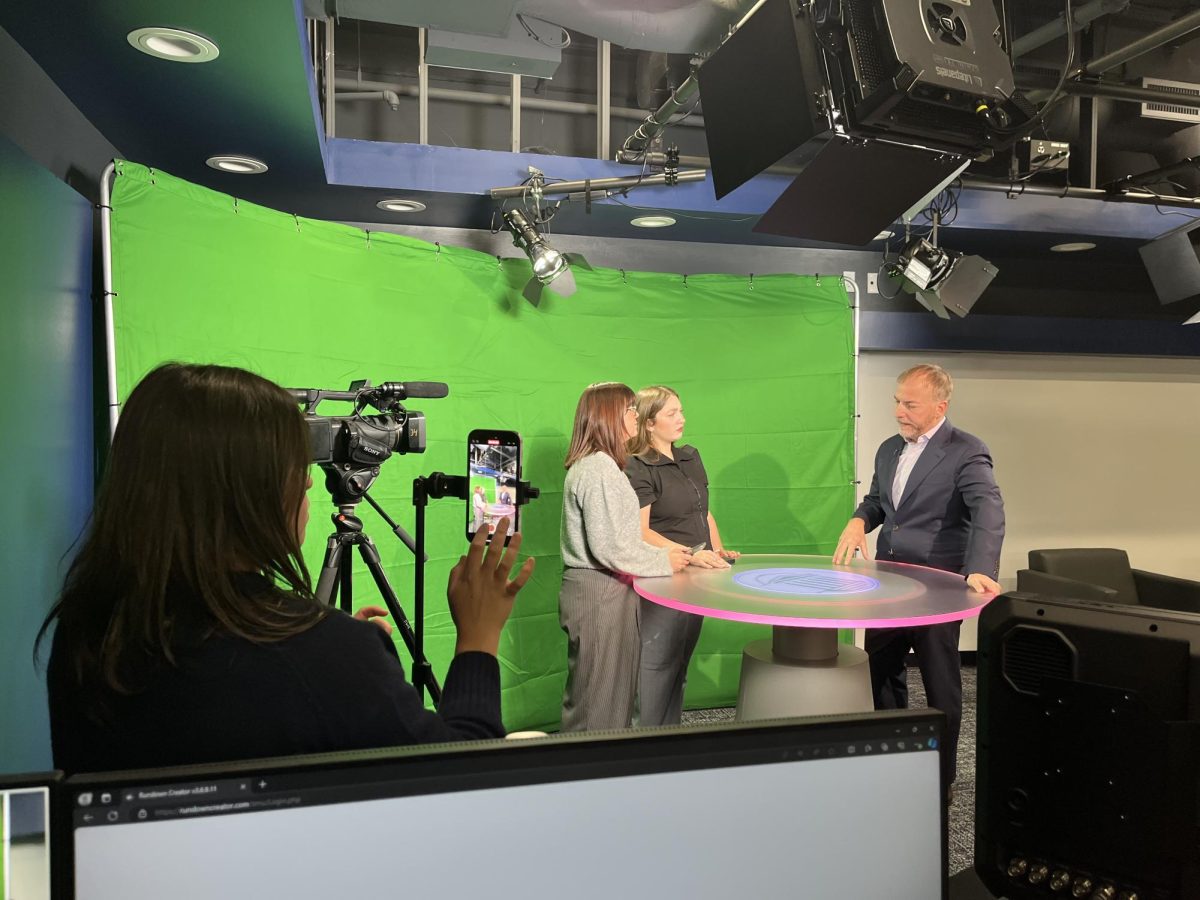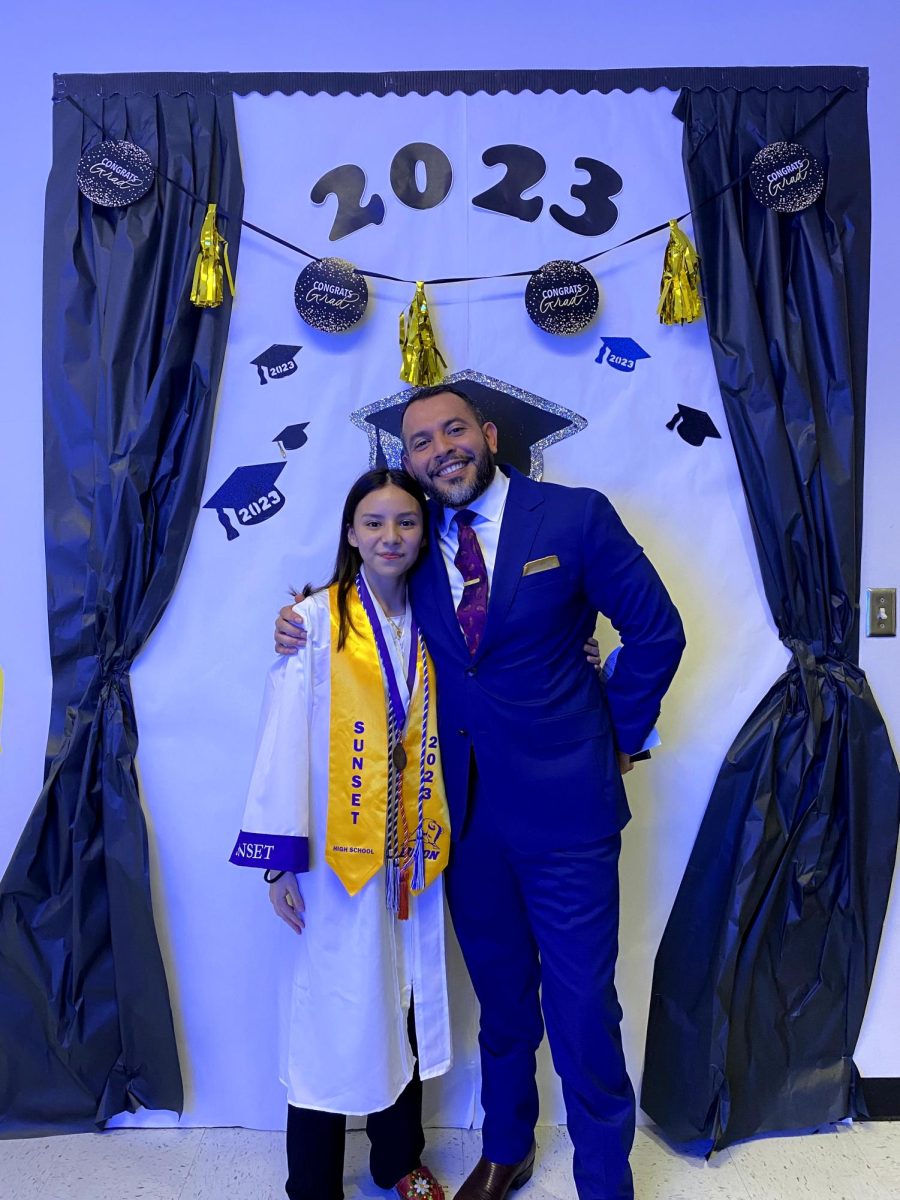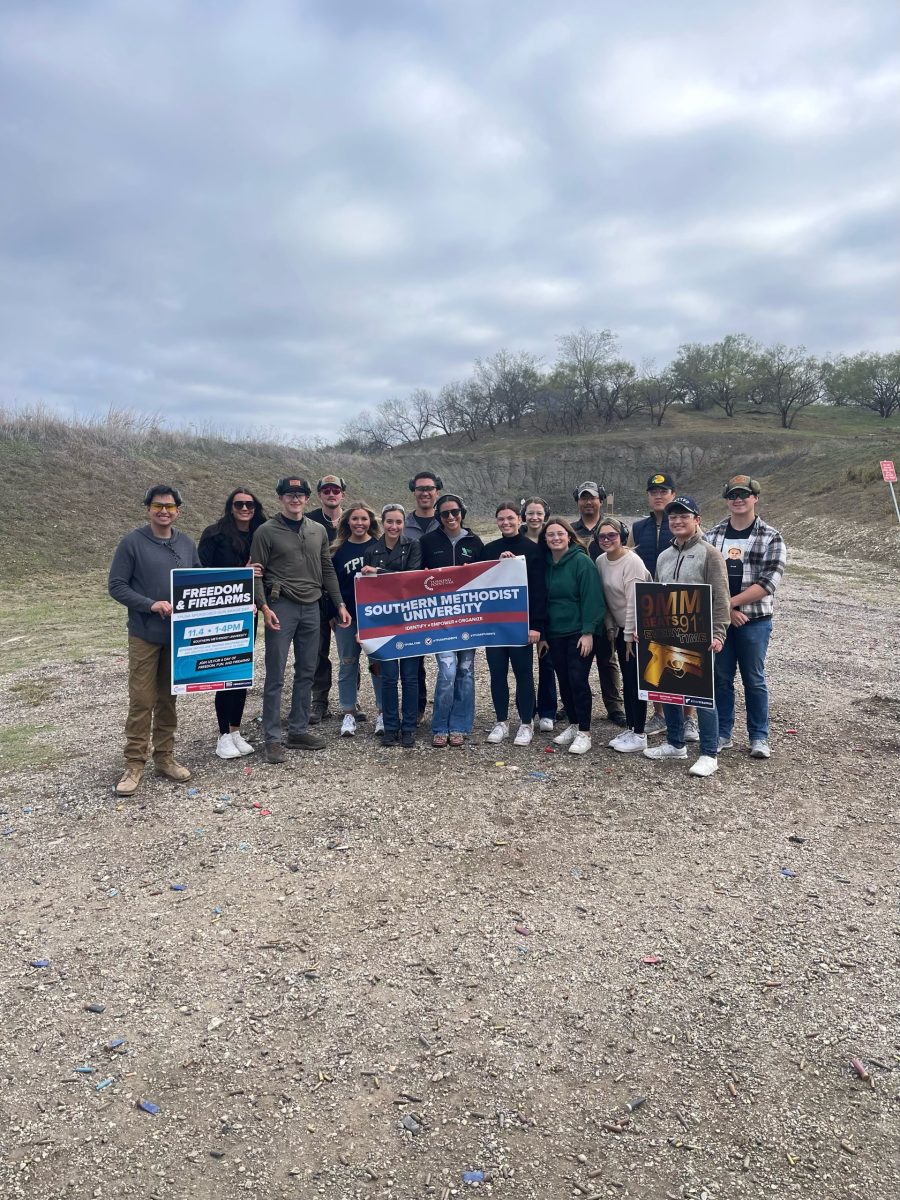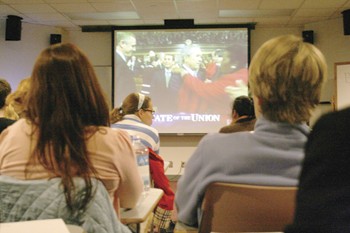
Students gathered to watch the State of the Union Address Tuesday night, and their responses were measured by dial research equipment. (Inset) Student Lucas Kleine was uses the dial to share his reaction to the President’s Address. (Nick McCarthy)
Lured by the promise of pizza and politics, a small group of SMU students gathered in Umphrey Lee Center Tuesday night to participate in a research study that measured their reactions to the president’s State of the Union address.
Students were given special dials to rate their reactions in real time, and data was instantly analyzed by researchers Dr. Dan Schill, assistant professor of corporate communications and public affairs, and Dr. Rita Kirk, professor and chair of corporate communications and public affairs.
CCPA and Political Science majors were invited to the event, but all students were welcome. Fifteen students ended up participating in the dial research and 75 percent of participants were Republicans. The other 25 percent were Democrats.
“The first purpose of the event was to encourage students to watch the speech tonight, and the second purpose is that this is part of a research project,” said Schill.
Tuesday’s event was the first opportunity for Kirk and Schill to utilize the dial research equipment, also known as perception analysis equipment, outside of a classroom setting. Throughout the State of the Union address, students were encouraged to move the dial to indicate what parts of the president’s speech they agreed with and what parts they disagreed with. One was the lowest rating, 100 the highest, and 50 was neutral.
“In CCPA we do a lot of research on the effect of messages, so tonight we looked at the president’s speech and what the reactions to his speech are,” said Schill.
The data from the response dials was measured every second and put together to show how attitudes change in real time.
“We looked at specific issues and there would be a pre-test and a post-test to see if people’s opinions changed,” Schill said. “We want to see if his speech was effective.”
During the speech, Kirk and Schill monitored a computer screen that graphed the response data of both Republicans and Democrats separately and together.
“The Republicans tracked more positively and the Democrats tracked more negatively,” said Kirk. “There were some moments when both agreed, and some when the dials didn’t move at all. As researchers, we’re particularly interested in looking for those moments in the speech that moved the dials.”
In the parts of the speech where Bush provided specific solutions for various issues, there was little movement of the dials. The parts of the speech about the environment and energy tracked very high for both Republicans and Democrats. The last part of the speech, which featured various American heroes, a State of the Union feature introduced by Ronald Reagan, tracked in the 90s for those on both sides of the political spectrum. For the most part, however, Democrats and Republicans stuck with their party on the issues.
“There were a lot of differences between Republicans and Democrats,” Schill said. “Democrats tracked below 30 often and republicans tracked above 70.”
Although Kirk and Schill were interested in seeing how the president’s speech changes viewers’ opinions of him and of the issues, junior CCPA major Candy Crespo did not believe that her judgments were affected by the speech.
“I don’t agree with the war and I hope he’s sincere about turning the country more green,” said Crespo. “But I don’t believe he has the charisma like other presidents have had to be an effective speaker.”
Junior anthropology major Patrick McDonald, who considers himself an independent, thought the speech was well-delivered and “surprisingly effective.”
“It made me want to do more research about the Middle East and all the sectarian violence, which he talked about a lot, and about which I’m ignorant,” McDonald said.
Kirk and Schill will produce a report on the results once they have had a chance to thoroughly consider the data.
“The data has already been analyzed, but it will take us a while to reflect,” Kirk said. “We will particularly look for the changes in opinions before and after the speech.”
The State of the Union research study will not be the last event of this kind on SMU’s campus.
“We will study the upcoming presidential elections with this equipment,” Kirk said. “We thought this would be a good opportunity to test our preliminary research hypotheses.



